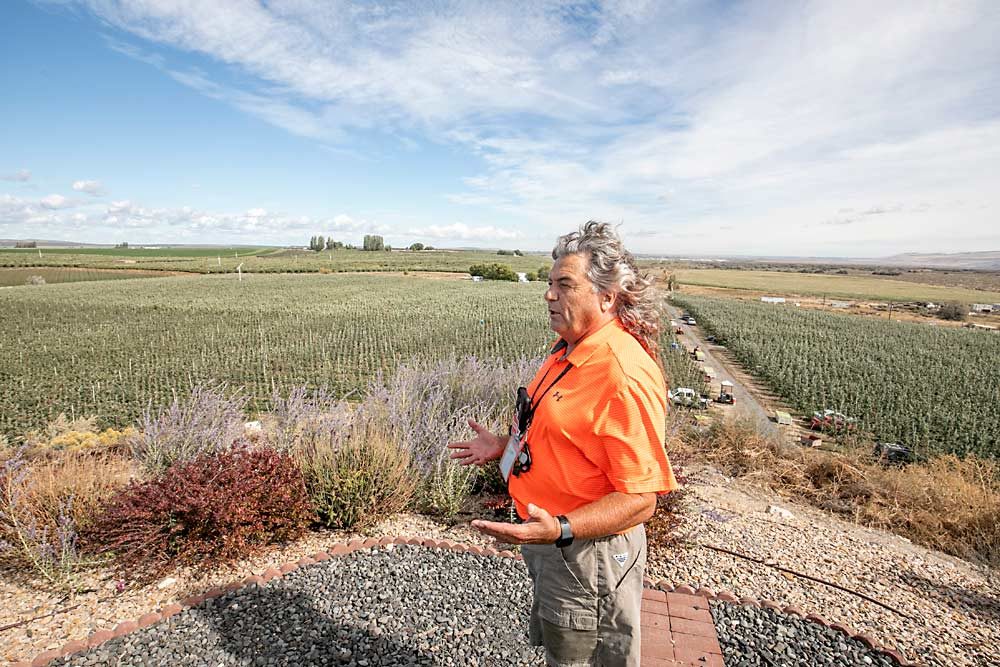
On a sunny late-September day, Dain Craver and fellow growers lean over the tailgate of a pickup and unfurl tattered strips of reflective fabric to search for green lacewing eggs, scurrying spiders and earwigs — giant earwigs, fattened up on a diet of orchard pests.
“Look at how healthy our earwigs look here,” Craver proclaims in a booming voice. “Look at how big.”
Craver, a Royal City, Washington, grower known for his experimentation in the orchards, wraps old pieces of the white material around tree trunks to provide a “hotel” for these beneficial arthropods and to protect graft unions from sunburn.
Techniques such as this have earned Craver wide respect as an industry leader, particularly in the organics sector. That hard work, years of industry leadership and community service and savvy business skills — combined with the quirky enthusiasm that allows him to get excited about earwig girth — make him the 2019 Good Fruit Grower of the Year.
The Grower of the Year award is bestowed annually by Good Fruit Grower magazine’s advisory board to an innovative and inspiring grower or family in North America and is presented during the Washington State Tree Fruit Association’s Annual Meeting in December.
Inspiring is an understated description of Craver. At conferences, he doesn’t just discuss scout teams, he trumpets the lesson. He doesn’t just host field days, he and his employees grill carne asada for “An Evening with Dain Craver.” He doesn’t just print packout reports, he distributes them in old Pee-Chee folders picturing short-shorted athletes with impossible grins because, well, “Everybody is happy in Pee-Chee world, man,” Craver said.
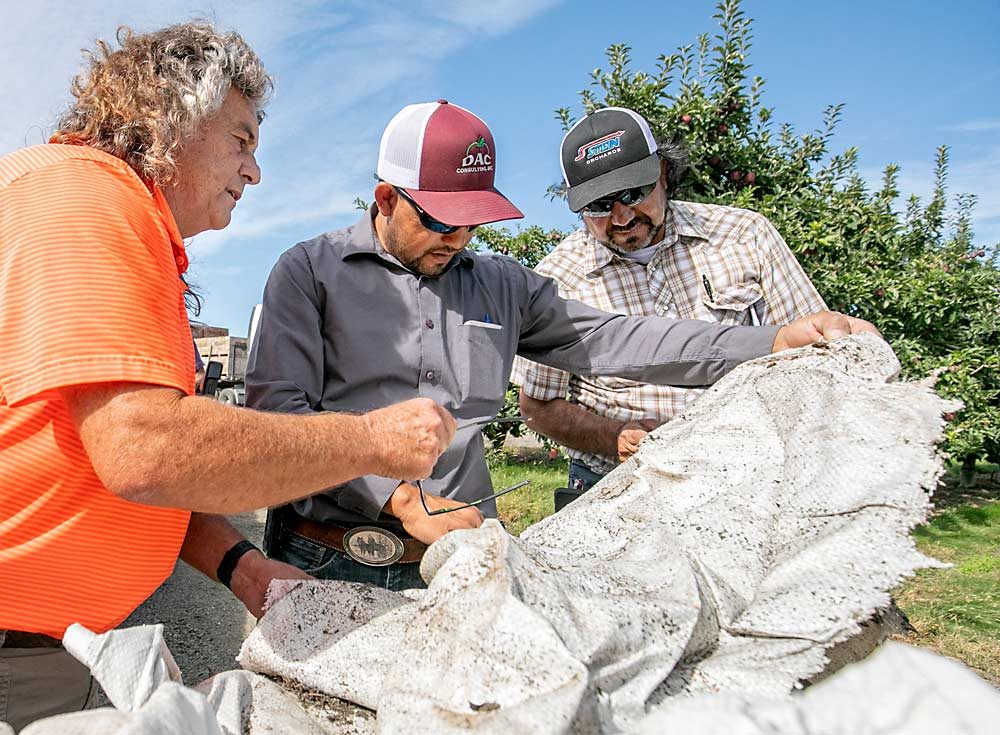
Life is that interesting for Craver. So is tree fruit.
“He loves the industry, and that’s putting it mildly,” said Catherine Stein, owner of KDS Orchards, for which Craver serves as general manager.
Craver, 63, has his fingerprints on maybe a dozen orchards in the Columbia Basin, the sprawling midsection of Washington, home to the bulk of the state’s apple acreage. But he wears two main hats: He is the chief operating officer for New Royal Bluff Orchards, four properties he owns and operates with an investment team; he also owns DAC Consulting, through which he manages several other orchards near Royal City.
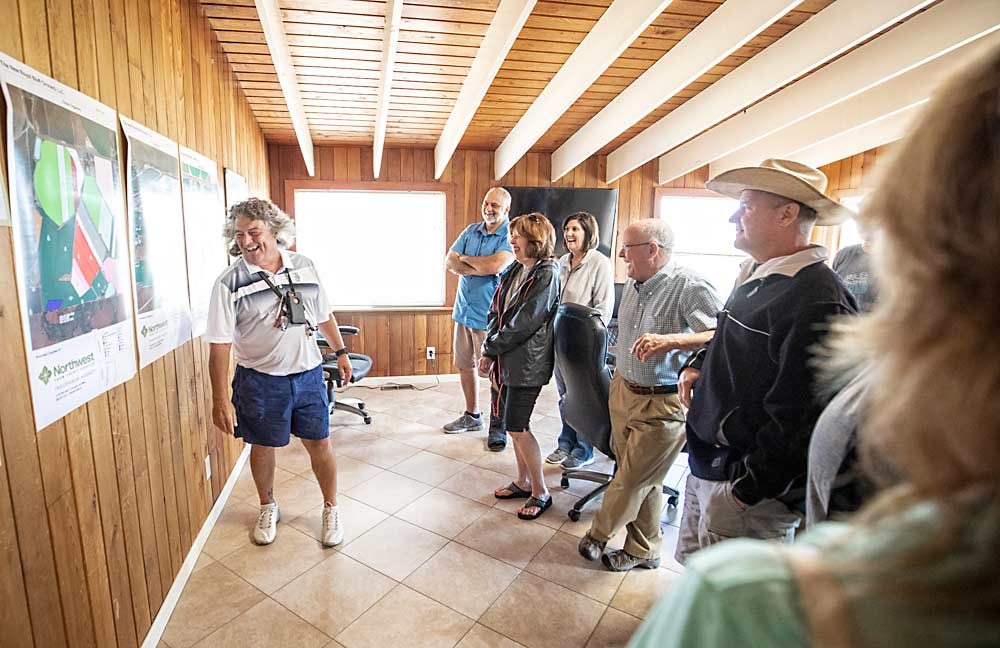
New Royal Bluff formed about five years ago when Craver merged his own Crave Organics with an investor-owned fruit production company. He joined the partners, many of whom he had worked with for decades, to give himself a retirement plan and provide an inheritance for his six daughters, beyond his own 170-acre farm, in an era when small farms have trouble competing.
New Royal Bluff is well on its way to farming 100-percent organic, a decision based largely on Craver’s expertise, said Jim Jackson, the CEO and largest partner. “If he wasn’t going to be part of my team, I don’t think I would have gone organic.”
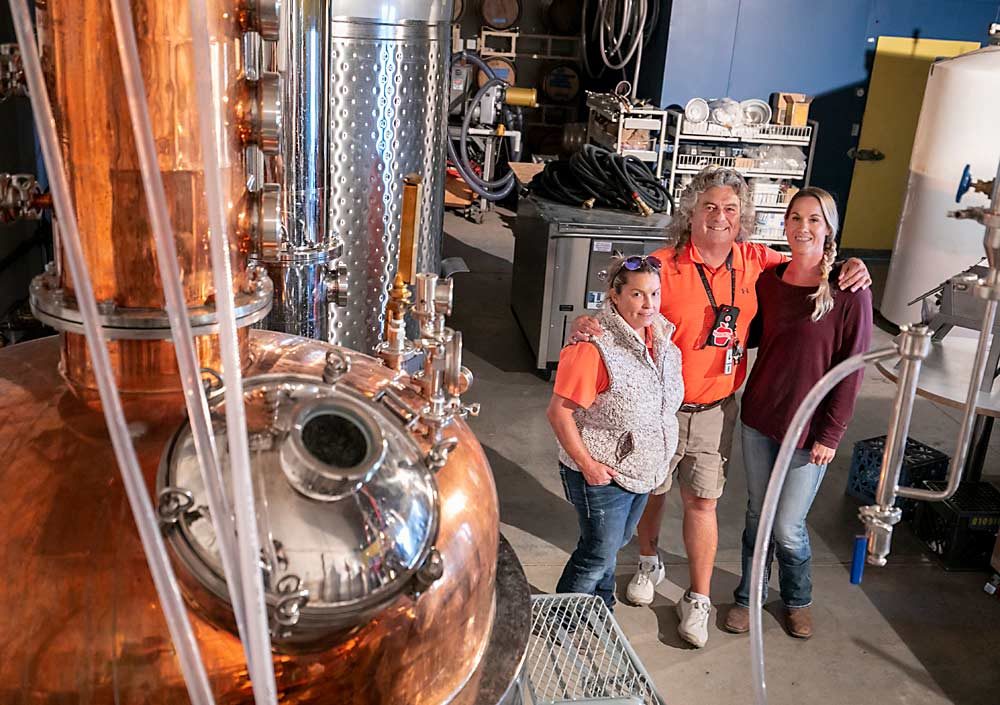
Advocate for change
Craver first began working for 600-acre KDS in 1996. Early on, Craver began suggesting the organic route, though Stein’s late husband, Keith, was reluctant. However, smaller horticultural changes recommended by Craver paid off and gradually earned him enough credibility to convince his traditionally minded employer to make the transition.
The decision paid off, said Rusty Wentz, the chief financial officer for KDS Orchards. For example, the company produces about 3,000 bins of organic pears on roughly 80 acres. “If we hadn’t made that decision four, five years ago, we’d be like the other pear growers and bleeding right now, and we’re not,” Wentz said.
Craver also convinced the Steins to renew 5 to 10 percent of orchards every year, setting aside 5 acres of land for nursery trees to make sure they had the rootstocks and the budwood to keep up. New Royal Bluff also has its own nursery.
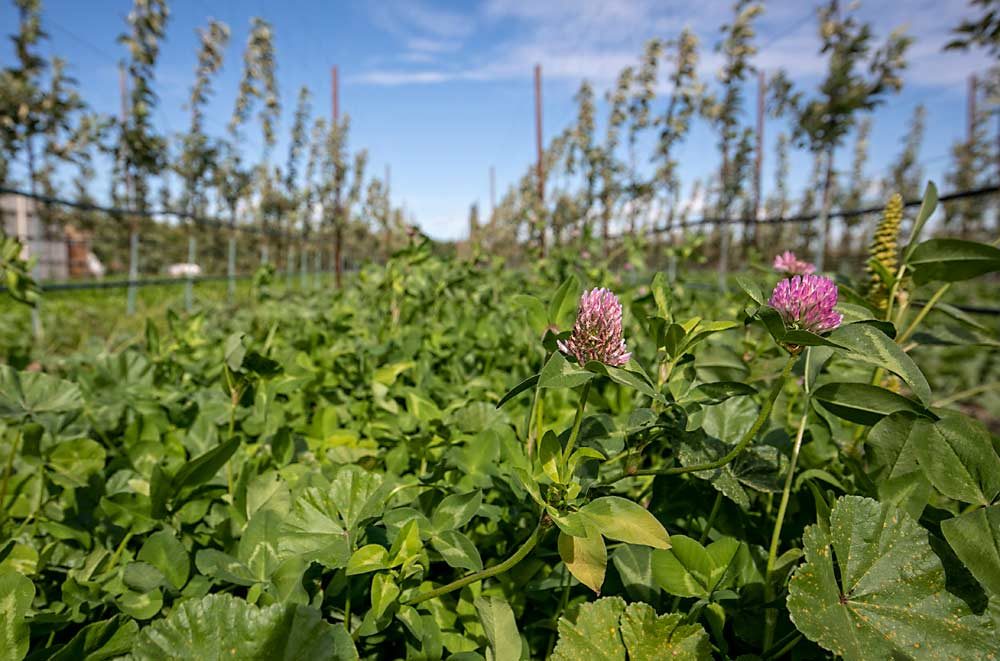
Craver has earned himself a reputation as a doer. Orchard owner John DiLoreto spent more than a decade frustrated by a pile of rocks left over from erosion control at an old irrigation ditch at his Palo Alto Orchard in the Frenchman Hills northwest of Royal City. Craver took over management in 2011 and cleared the rocks within a month.
DiLoreto, a retired Seattle stockbroker and Navy officer, calls Craver a good advocate for change who always wants to make things better. “At first it will drive you nuts, because every time I meet him, we drive around the orchard and he has other suggestions for change,” DiLoreto said.
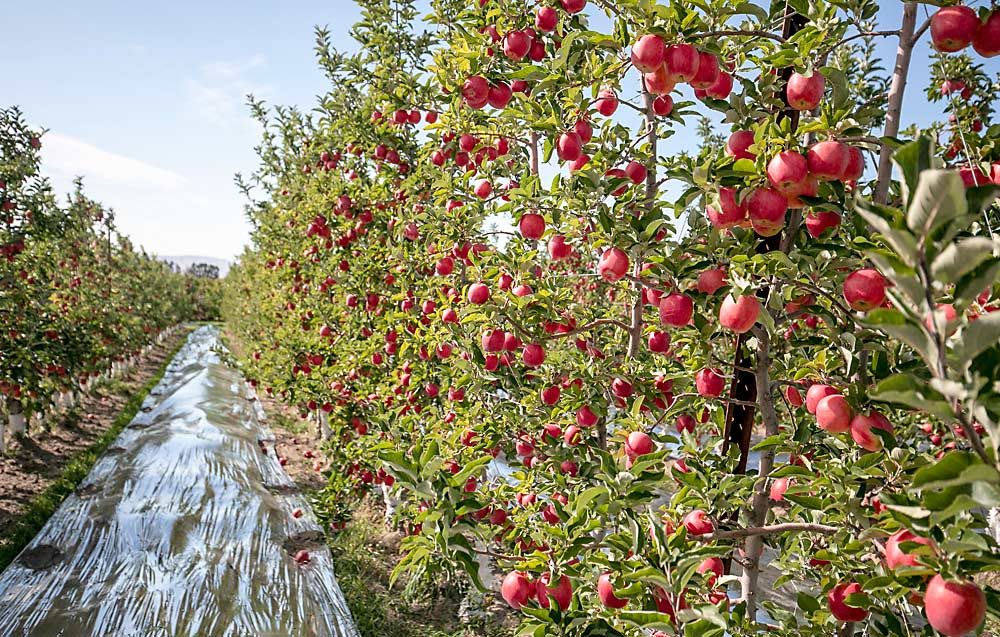
For example, the orchard had been producing Cameo apples and began struggling to find a packer willing to take them. So, as one of the first major changes in the orchard, Craver suggested grafting them to Honeycrisp. The farm now specializes in Honeycrisp. Craver also has brought on H-2A workers and steered the construction of worker housing units at the farm. He wanted a new work shed, so DiLoreto built him one.
“His recommendations are so logical, that I just do it,” DiLoreto said.
An eagerness to learn
Craver was not always the expert. He did not grow up on a farm or have family in the tree fruit business.
He is a product of 1970s Southern California and briefly tinkered with a professional skateboarding career. While he was in high school, his parents moved to Eastern Washington. After high school, Craver studied to be an X-ray technician but nearly fainted at the sight of a broken arm during one of his first hospital shifts.
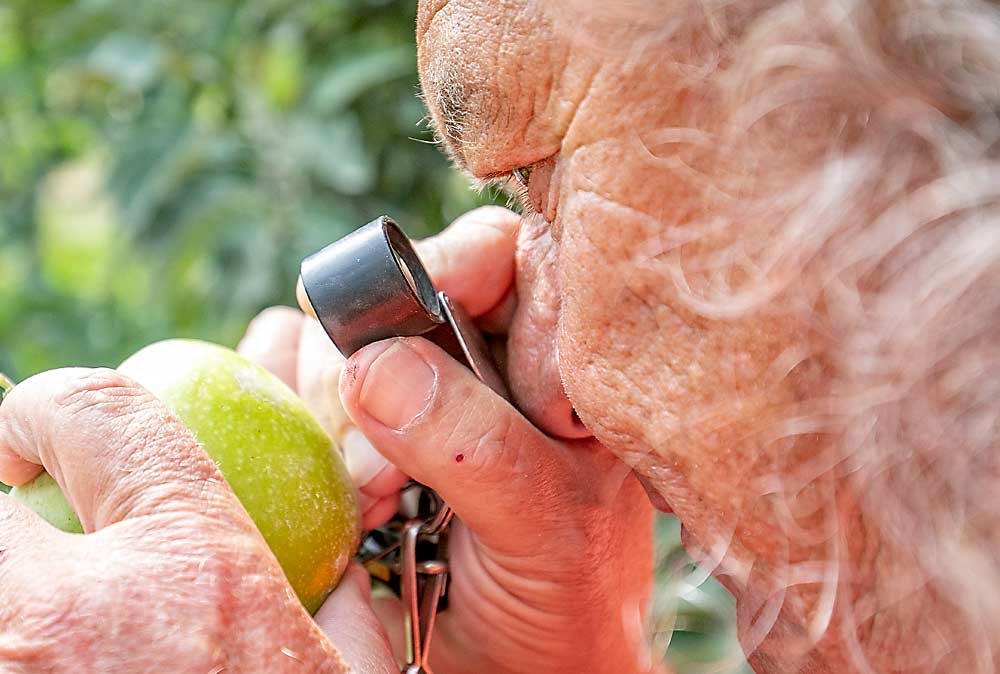
So, he enrolled at Washington State University to pursue a horticulture and orchard management degree. Though he had no experience in the industry, he liked orchards and knew they were profitable in those days. He became fascinated with entomology, especially how predators control pests. “That class just dinged me, I mean opened my eyes,” he said.
However, he never finished his degree, quitting school a semester early when Columbia Fruit offered him a job he couldn’t pass up. He liked the work but kicks himself now for his youthful haste.
During his career, he has switched orchard management positions in Washington but settled in Royal City because he liked the community for his family and found the rolling topography well-suited for apples. He planted his own orchard, Crave Organics, in 1993 with the help of his daughters and his longtime manager, Juan Ojeda.
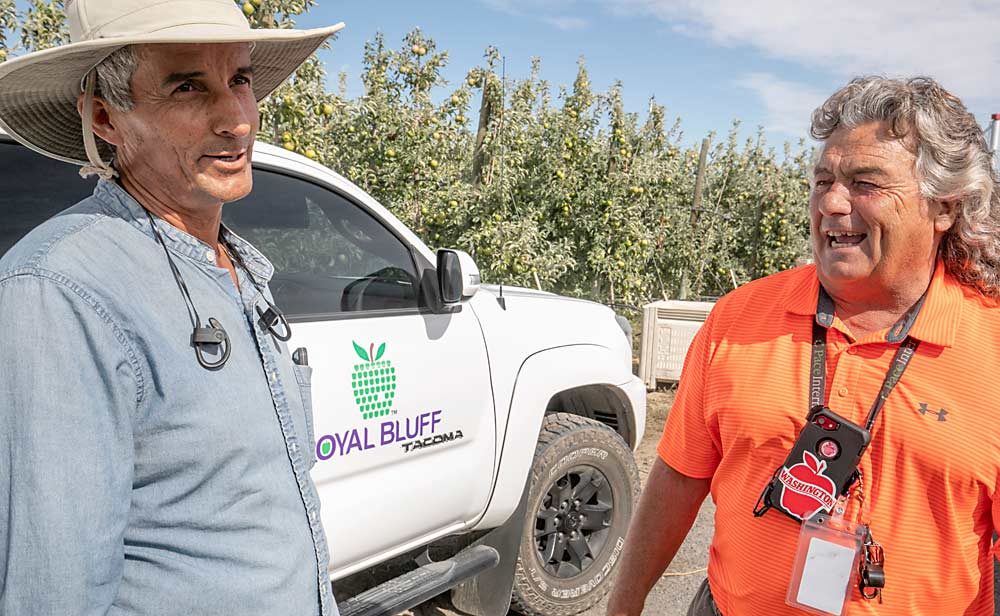
Sarah Craver, one of his daughters, recalled times of struggle with her father in those days. He seems confident now, but he had enough humility to learn from others earlier in his career. Few growers were organic at the time, so he leaned heavily on Jay Brunner and Tim Smith of the Washington State University Tree Fruit Research and Extension Center in Wenatchee.
“He wasn’t always the guy that everybody called,” she said.
Sarah, a Simplot crop adviser, is more involved with the orchard business than her sisters. Janette Thompson, another daughter, often helped Craver demo his Rosa Lynn variety at grocery stores across the country and now works for a spirits startup using culled fruit under the New Royal Bluff name.
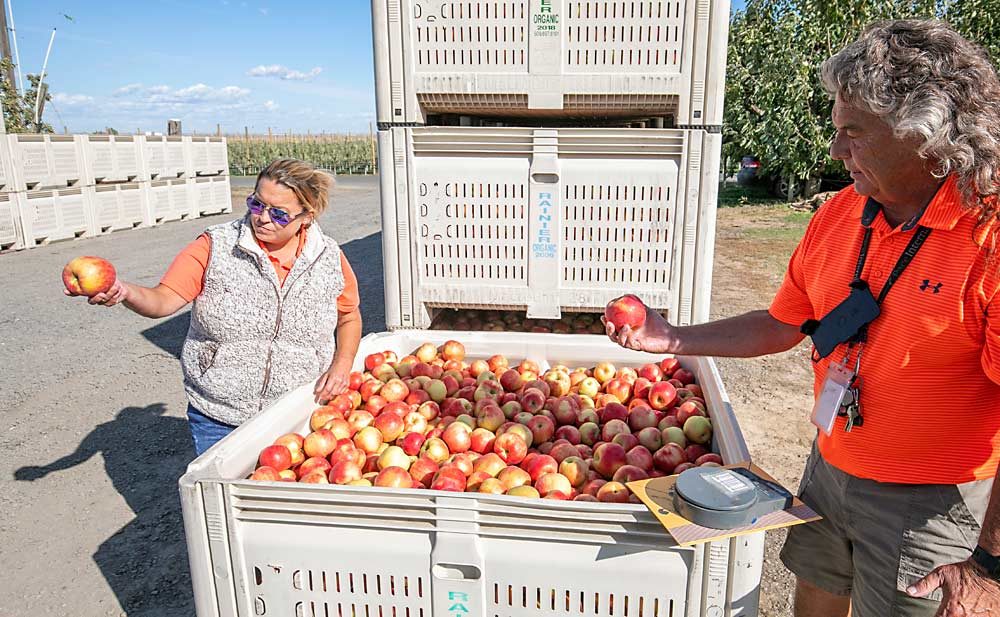
Data-based decisions
Craver’s exuberant personality belies the careful consideration behind his decisions.
For example, KDS and New Royal Bluff have a mixture of V-trellis and vertical trellis, but Craver wants to standardize with vertical at 11-foot row spacing. That works best with platforms and the coming age of mechanization, he said.
Speaking of platforms, Craver has been experimenting with various models for more than 10 years. New Royal Bluff has two. The company plans to invest in more, but Craver wants his managers to decide which model works best, based on feedback from workers.
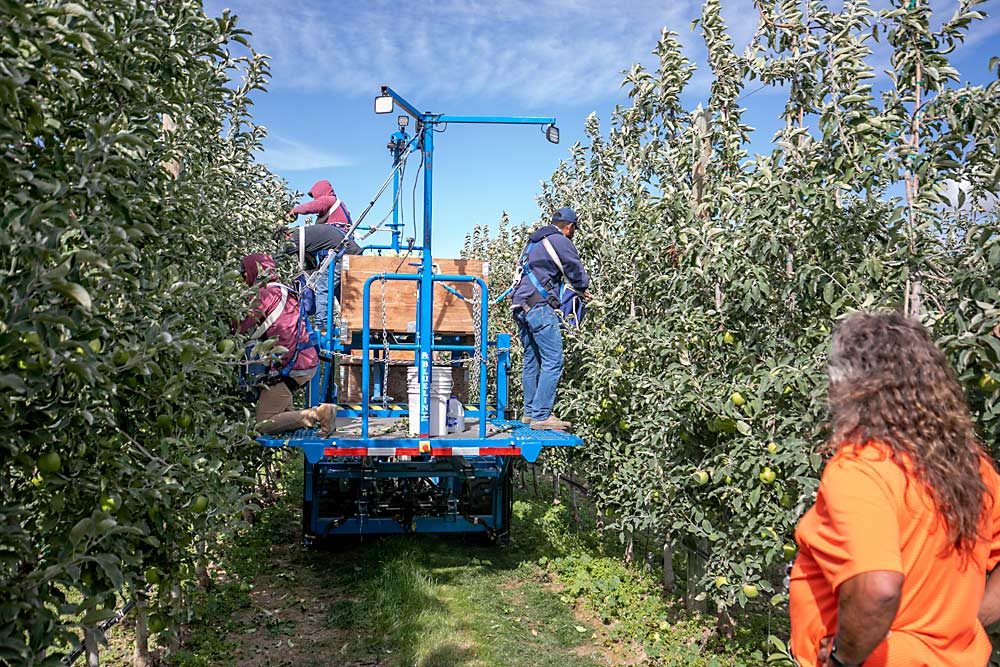
Craver also is known for his scout teams. Under DAC Consulting, he hires experienced orchard workers after-hours to run beat-tray surveys through the blocks, detecting the emergence of pests and diseases that drive IPM decisions.
At KDS’ Manzana orchard, he huddled over bins of freshly harvested Red Delicious apples in October with Jose Ramirez, a longtime colleague and partner. They weigh a few as samples, to compute box-size, then they pore over some packout paperwork and soil sample reports.
Craver notices a high organic matter reading and says to Ramirez, “That’s telling me compost is helping.”
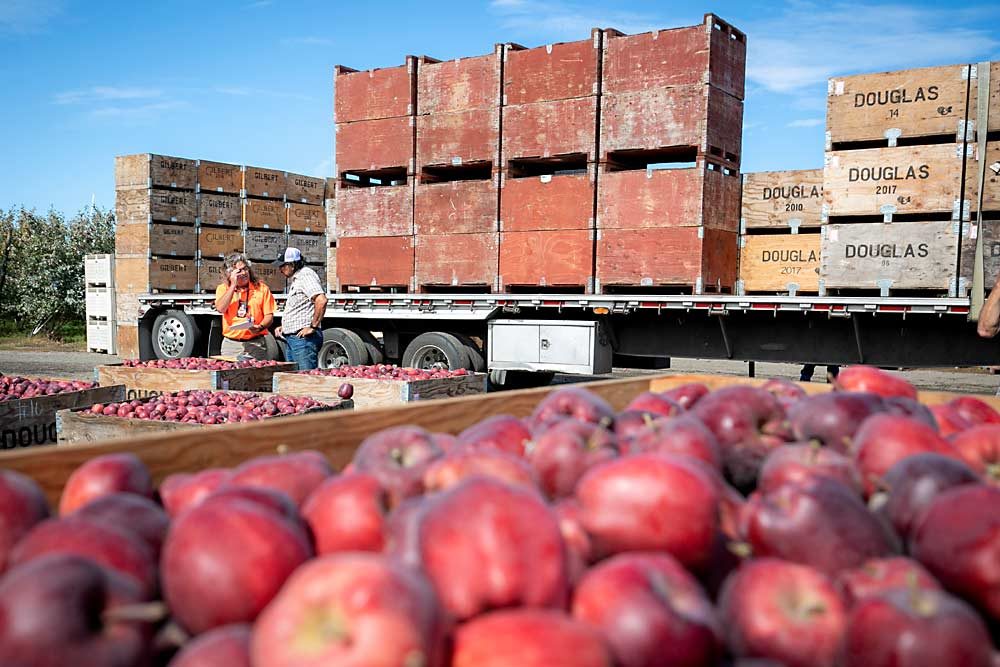
Craver and Ramirez are partners in a proprietary variety, a midseason red apple propagated from a chance seedling of unknown parentage in 1991. They named it Rosa Lynn, a mashup of their wives’ first names. Between KDS and New Royal Bluff, they produce roughly 1,000 bins of Rosa Lynns each year.
Beyond skill, decision-making and personality, relationships are the backbone of Craver’s career in the fruit industry.
For example, he sells fruit to 11 different packing companies, probably too many for the sake of logistics, he said. Tiny Royal City may seem isolated, but it’s centrally located from the industry packing centers of Wenatchee, Yakima and the Tri-Cities.
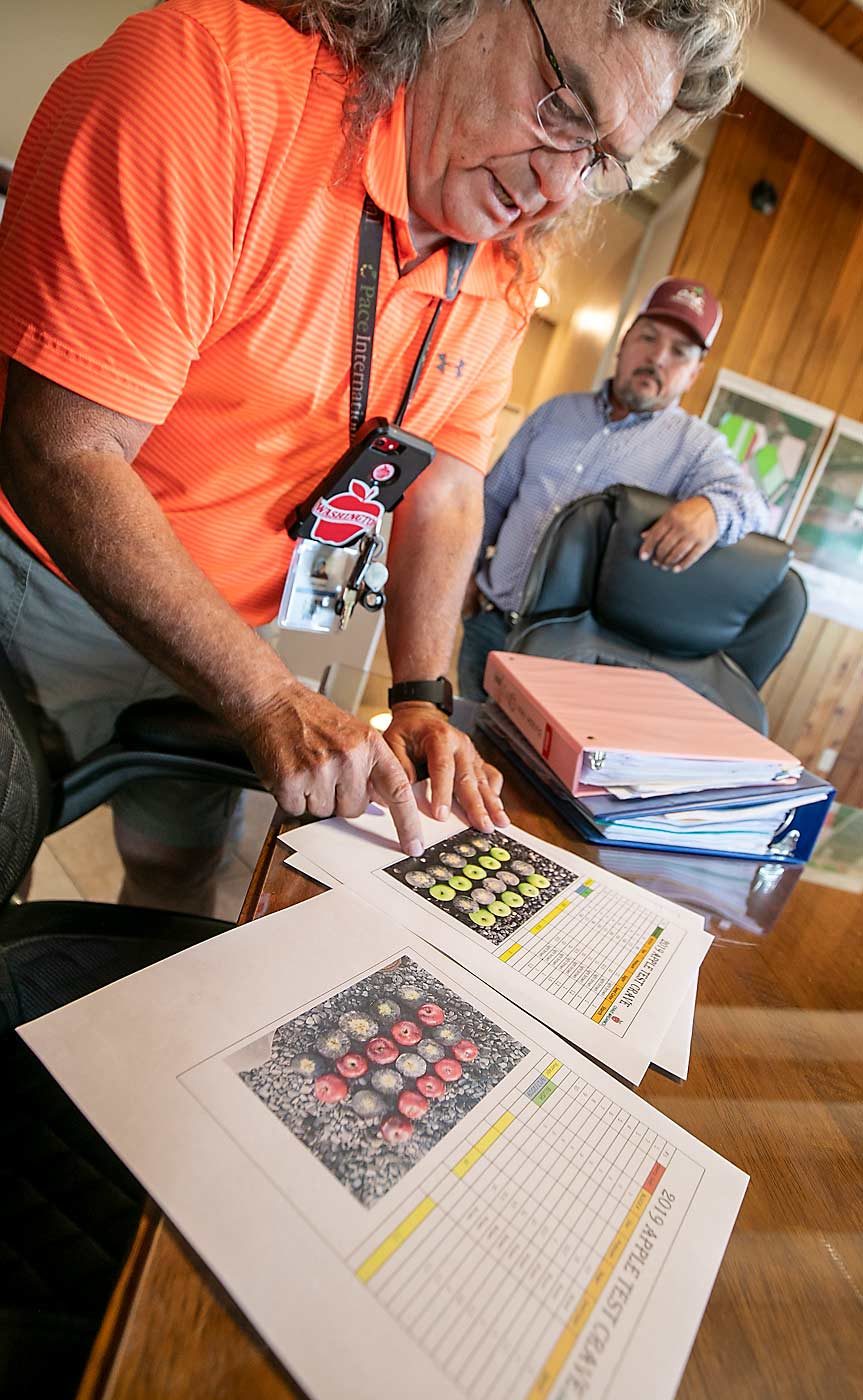
Craver often is asked how he keeps up management of so many different properties, while still finding time to contribute to industry events and Royal City activities. Relationships are his answer. He doesn’t do it himself.
“I got excellent people,” he said. “That’s how you do it. You find yourself good people and surround yourself with them. And that’s what I have done.”
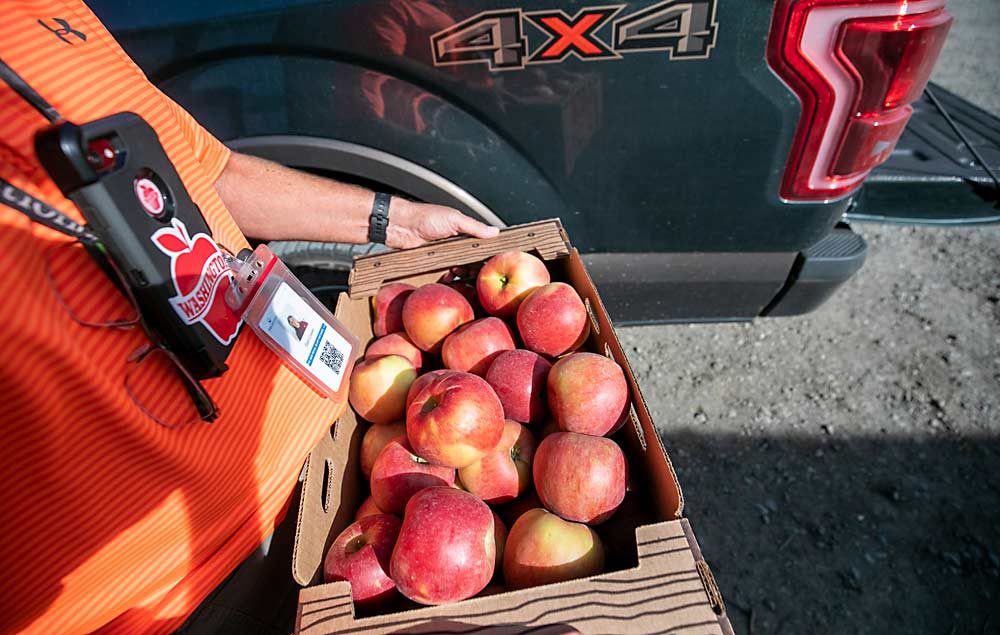
—by Ross Courtney
Related:
—Financial partners offer growers growing opportunities
—Young growers learning and growing together

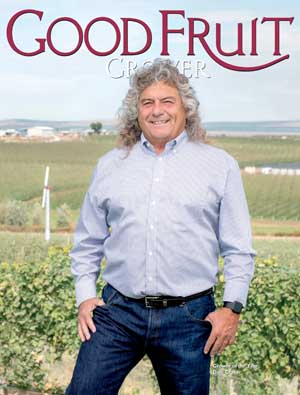





Leave A Comment